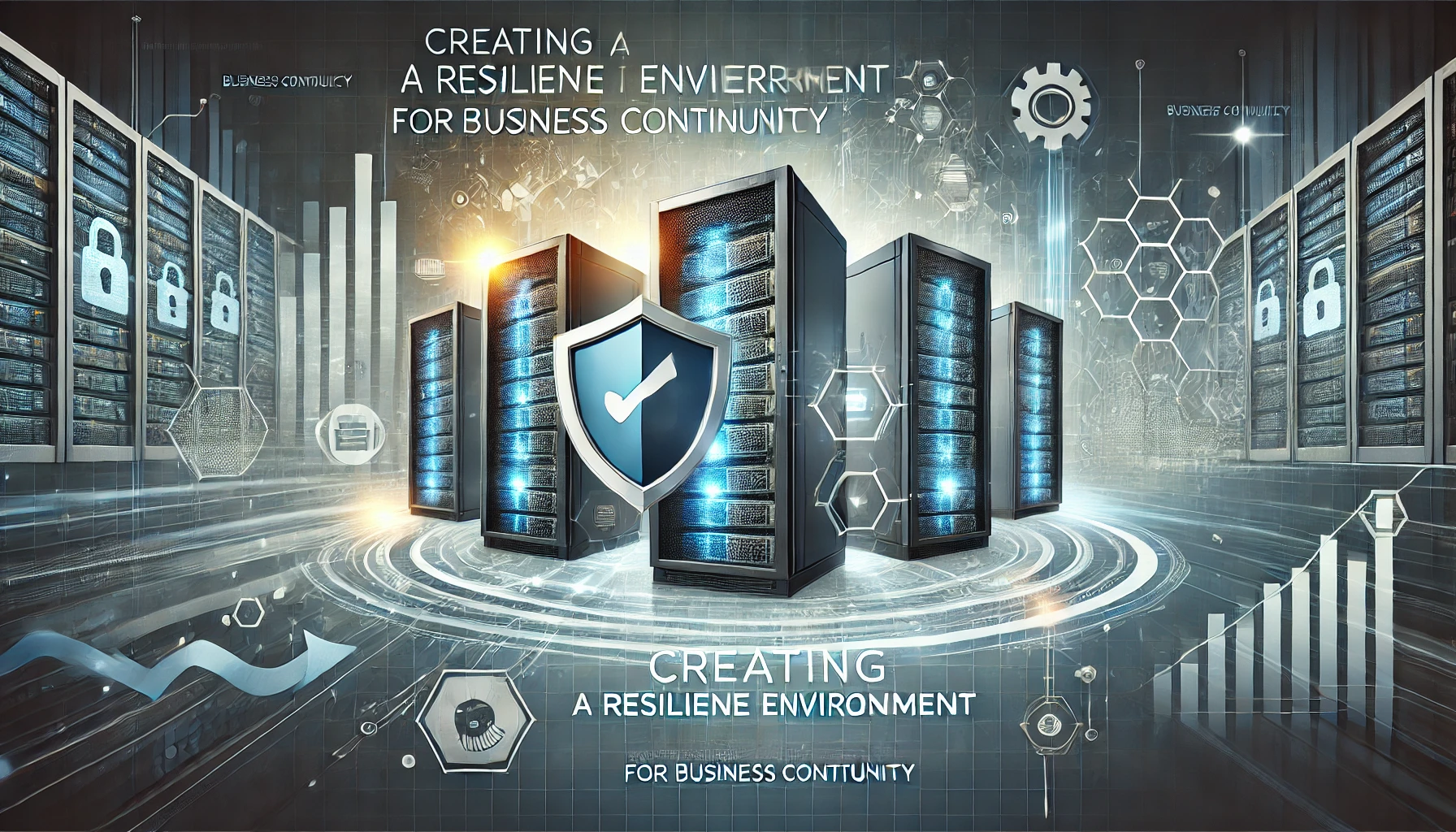In today’s fast-paced digital era, ensuring business continuity has become a cornerstone of organizational success. A resilient IT environment not only safeguards critical operations but also ensures minimal disruptions in the face of unexpected challenges such as cyberattacks, natural disasters, or system failures. Here are essential strategies to create a resilient IT environment tailored for business continuity.
1. Conduct Comprehensive Risk Assessments
Understanding potential risks is the foundation of IT resilience. Regularly conduct risk assessments to identify vulnerabilities in your IT systems, infrastructure, and processes.
Key Steps:
- Map critical systems and their dependencies.
- Evaluate the impact of potential disruptions.
- Develop mitigation strategies tailored to identified risks.
2. Implement Redundant Systems
Redundancy is key to maintaining operations during failures. By duplicating critical systems, businesses can quickly switch to backup resources without significant downtime.
Best Practices:
- Use failover systems for critical applications.
- Maintain offsite data backups.
- Ensure network redundancy by utilizing multiple ISPs.
3. Adopt Cloud Solutions
Cloud technology offers flexibility, scalability, and resilience. Cloud providers often have robust infrastructure that ensures high availability and disaster recovery.
Recommendations:
- Choose reliable cloud service providers with proven track records.
- Leverage cloud-based disaster recovery (DRaaS) solutions.
- Regularly test cloud recovery processes.
4. Strengthen Cybersecurity Measures
Cyberattacks can cripple business operations. A resilient IT environment requires proactive measures to detect, prevent, and respond to threats.
Key Measures:
- Use advanced threat detection tools.
- Enforce multi-factor authentication (MFA) across systems.
- Regularly update and patch software to eliminate vulnerabilities.
5. Develop a Business Continuity Plan (BCP)
A comprehensive BCP outlines steps to maintain operations during crises. This plan should include IT-specific guidelines and recovery timelines.
Elements of a Strong BCP:
- Defined roles and responsibilities.
- Detailed recovery procedures for IT systems.
- Communication plans for stakeholders.
6. Train Employees Regularly
Employees play a critical role in maintaining IT resilience. Regular training ensures they are prepared to respond effectively during incidents.
Focus Areas:
- Cybersecurity awareness.
- Disaster recovery procedures.
- Proper use of IT tools and systems.
7. Leverage Monitoring and Automation
Real-time monitoring and automated processes help identify and address issues before they escalate.
Tools to Use:
- Network monitoring software.
- Automated backup systems.
- AI-powered analytics for predictive maintenance.
8. Test and Update Continuously
Resilience is not static; it requires continuous evaluation and updates to address evolving threats and business needs.
Best Practices:
- Conduct regular disaster recovery drills.
- Review and update the BCP annually.
- Incorporate feedback from incident responses into future planning.
Conclusion
Creating a resilient IT environment is a continuous process that combines strategic planning, robust systems, and a proactive approach. By implementing these practices, businesses can safeguard operations, build trust with stakeholders, and ensure long-term success even in the face of challenges.
How does your organization approach IT resilience? Share your insights and tips in the comments below!

